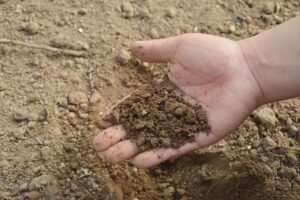APPLICATIONS OF TECHNOLOGY:
Ecologically-friendly agriculture
Carbon accounting and monitoring
BENEFITS:
Quick and accurate measurement of carbon and several other key elements in soil samples
Rapid soil core measurement and analysis within minutes without the need for sample preparation
Cleaner and comprehensive sampling of the soil core for information about key elements in a single measurement
BACKGROUND:
Accurate measurement of carbon content in soil is needed for carbon sequestration efforts. Existing techniques for testing the carbon content of soil cores are work-intensive and often unrepresentative of the larger soil body. New soil sensing techniques are necessary for larger sample measurements, climate change mitigation, and agricultural productivity.
TECHNOLOGY OVERVIEW:
Berkeley Lab researchers have developed a new tool that analyzes the response of carbon and other key elements using a beam of neutrons. Furthermore, this device provides a detailed mapping of the distribution of different elements to a resolution of about 5 centimeters.
Researchers developed a new instrument to investigate the elemental distribution of carbon in soil. The instrument is based on measuring gamma rays induced by inelastic neutron scattering where the gamma ray energy is isotope specific. Using an imaging technique called associated particle imaging (API), researchers can measure the locations of the neutron scatter centers within a resolution of a few centimeters. The instrument provides data for the carbon depth profile as well as other key elements in soil such as AI, Si, O, Fe and more, and can be deployed at a field site or in the laboratory. A whole soil core can be measured with this setup, removing the need to down sample from kilograms of sample material to a few milligrams. This invention dramatically reduces labor cost, sample preparation, and turnaround time.
Berkeley Lab is looking for partners to help make the process field deployable and more automated, so that it can be incorporated into various devices for sensing in farms and across forests. Future collaborations could include further testing and process development.
DEVELOPMENT STAGE: Proven principle
FOR MORE INFORMATION:
https://aip.scitation.org/doi/10.1063/5.0030499
PRINCIPAL INVESTIGATORS:
Arun Persaud
Bernhard A Ludewigt
Eoin L Brodie
Cristina Castanha
Mauricio Ayllon Unzueta
STATUS: Patent pending.
OPPORTUNITIES: Available for licensing or collaborative research.
SEE THESE OTHER BERKELEY LAB TECHNOLOGIES IN THIS FIELD:
Tomographic Electrical Rhizosphere Imager (TERI) for Efficient Quantification of Plant Root Traits 2020-001
Plant density and enhanced plant vigor estimation algorithms for high-resolution images 2019-179

